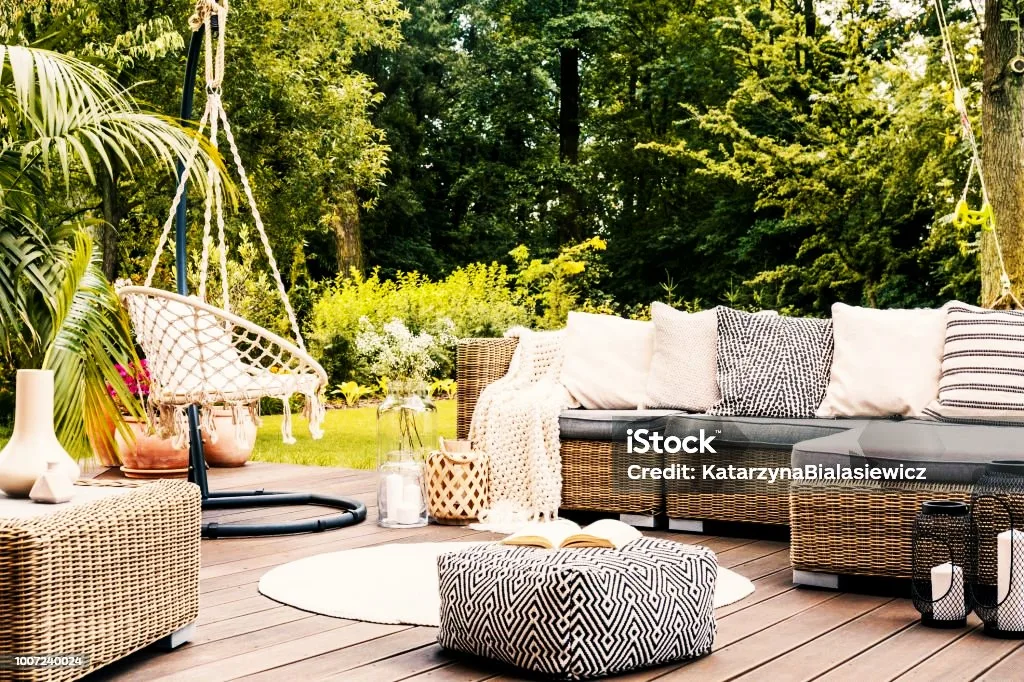What is Outdoor Furniture?
Outdoor furniture refers to furniture specifically designed for use in outdoor environments, such as gardens, patios, decks, or balconies. Unlike indoor furniture, outdoor furniture is built to withstand exposure to various weather conditions, including sunlight, rain, wind, and temperature fluctuations. It typically features materials, construction techniques, and finishes that provide durability, resistance to moisture, and protection against fading and deterioration.
Characteristics of Outdoor Furniture
1. Durability: Outdoor furniture must be able to withstand exposure to the elements without deteriorating quickly. Materials such as wood, metal, plastic, and synthetic wicker are commonly used for their durability and resilience.
2. Weather resistance: Outdoor furniture should be able to withstand sunlight, rain, humidity, and temperature fluctuations without warping, fading, or rusting. Weather-resistant materials and finishes help protect outdoor furniture from damage caused by exposure to the elements.
3. Low maintenance: Given their exposure to outdoor conditions, outdoor furniture should be easy to clean and maintain. Materials that are resistant to stains, mildew, and rust require minimal upkeep, making them ideal for outdoor use.
4. Comfort: Outdoor furniture should be comfortable to use for extended periods, whether for lounging, dining, or socializing. Cushions, upholstery, and ergonomic designs contribute to the comfort of outdoor seating and lounging areas.
5. Style and aesthetics: Outdoor furniture comes in a wide range of styles, designs, and finishes to complement various outdoor settings and personal preferences. From classic and traditional to modern and contemporary, outdoor furniture can enhance the aesthetic appeal of outdoor spaces.

Types Of Outdoor Furniture
1. Wooden furniture: Wooden outdoor furniture is a timeless choice known for its natural beauty, warmth, and durability. Common wood types used for outdoor furniture include Teak, Sheesham, Cedar, Eucalyptus, and Acacia. Wooden furniture requires regular maintenance, such as sealing and staining, to protect it from moisture and prolong its lifespan.
2. Metal furniture: Metal outdoor furniture is valued for its strength, durability, and ability to withstand harsh weather conditions. Common metals used for outdoor furniture include aluminum, wrought iron, and steel. Metal furniture may feature intricate designs and decorative elements, adding a touch of elegance to outdoor spaces.
3. Wicker furniture: Wicker outdoor furniture is made from woven natural or synthetic fibers, such as rattan, cane, bamboo, or resin wicker. Wicker furniture is lightweight, comfortable, and often features a casual, relaxed aesthetic. Synthetic wicker is highly durable and resistant to moisture, making it suitable for outdoor use
4. Plastic furniture: Plastic outdoor furniture is affordable, lightweight, and easy to clean, making it a practical choice for outdoor living spaces. Made from materials like polyethylene or resin, plastic furniture is resistant to moisture, fading, and rot. Plastic furniture comes in a variety of colors and styles, allowing for customization and versatility.
5. Concrete furniture: Concrete outdoor furniture offers a modern and minimalist aesthetic, perfect for contemporary outdoor settings. Crafted from durable and weather-resistant concrete, concrete furniture is sturdy, low maintenance, and suitable for outdoor use. Concrete furniture may include benches, tables, planters, and decorative elements.
By considering factors such as durability, weather resistance, maintenance requirements, comfort, and aesthetics, you can choose outdoor furniture that complements your outdoor space and enhances your enjoyment of outdoor living. Whether you prefer the natural beauty of wood, the elegance of metal, the casual charm of wicker, the practicality of plastic, or the modern aesthetic of concrete, there are outdoor furniture options available to suit every style, budget, and preference.





